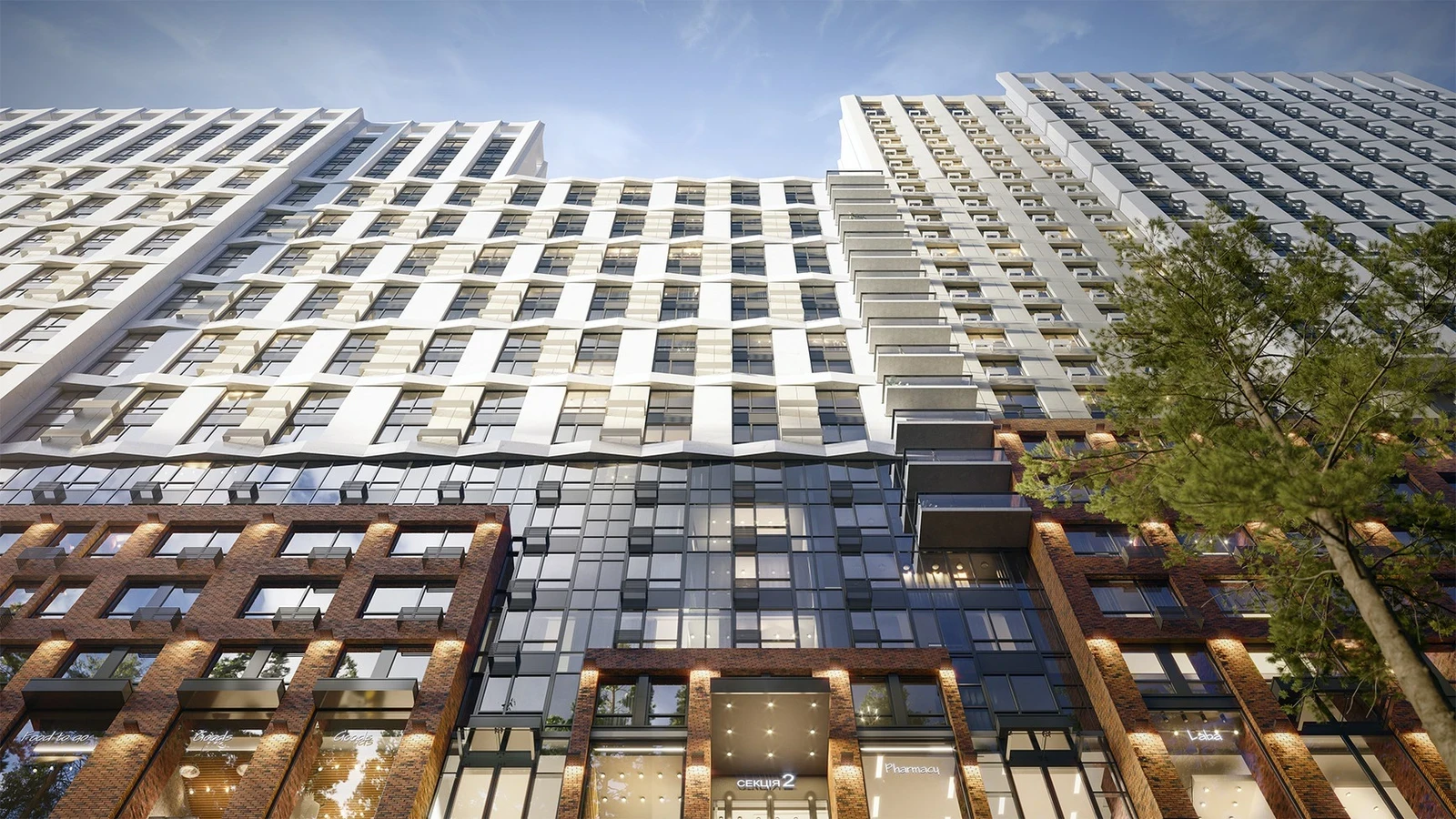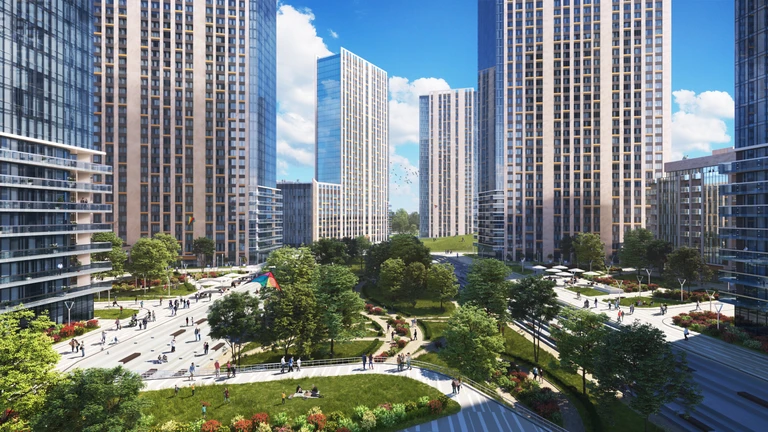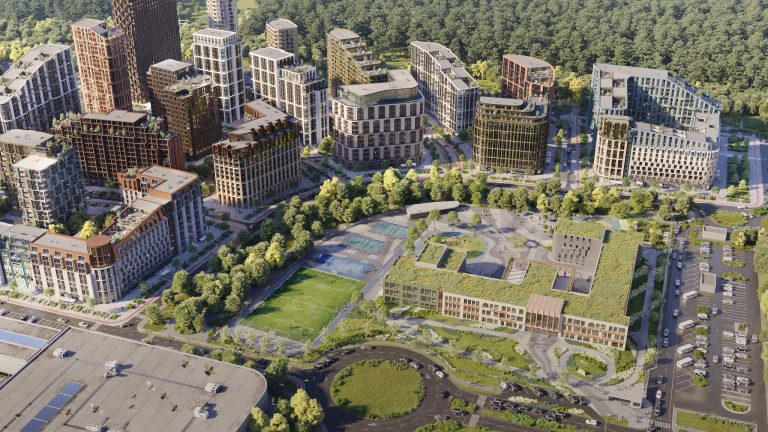How to invest in real estate during a war
31.05.2024

Before the start of the full-scale invasion - real estate investments were considered one of the most profitable. At the initial stage of construction, the investor could earn up to 85% per annum
Before the war, as a rule, investors bought pits with a minimum down payment of 30%, fixed the price, and six months later received an increase of 10-15%. The profitability of individual projects - through rescheduling and the growing real estate market - could reach a crazy 60%-85% per year. But the average return on the portfolio was still at the level of 50% per annum even in 2020-2021.
I will give an example of the return on investment in residential real estate at DIM facilities - under the given condition of purchase with 100% payment at the start of construction and sales in 2021. In the "New Autograph" facility, the starting price in 2018 was $650 per m2, in 2021 it increased to $1,450. Thus, the annual ROI (rate of return — profitability) was 40%. In "Metropolis" - profitability is approximately at the same level, in 2017 m2 was sold at the level of $600, in 2021 it was already $1,600.
A136 showed generally excellent results for investors who bought at the start. In 2020, m2 was worth $1350, and in 2021 - already $2400. Annual ROI was 85%. As in the case of Park Lake City, where in 2017 m2 could be taken for $500, and in 2021 it was already worth $1,800. The yield was 65% per annum. In this case, the secret of success lies in the formula: the right project (high growth from the start, a winning concept and location), the right entry price (start of the project), the right stage of exit (at the peak of the market).
Today, in the conditions of a full-scale war, the initial data for investors is completely different. First, there is no such difference in risk and, accordingly, the price. Now, the riskiest stage is not the first six months after the project's launch, as it was before, but the first 12-18 months, that is, when the object is near the final stage of construction. In addition, the number of developers who continue to build has decreased many times over. According to them, a certain credit of trust was created, which restrains the growth of risks.
Secondly, the demand for apartments as an investment is quite restrained. The price increase for the first half of the year is no longer 10-15%, but about 5-7%. An exception may be business and premium class projects, when the developer is forced to raise prices due to limited supply.
Thirdly, the price per m2 at the start has increased significantly. If earlier developers dispersed queues with the help of a low price, now due to the increased cost, the corridor of price growth has significantly decreased. At most, the price per m2 at the initial stage of construction is comparable to the price in already completed complexes or houses with higher readiness.
Players who continue to invest in residential real estate at the construction stage are focused on finding offers from individuals with a discount of 10-20% from the official price from the developer. But this also applies only to objects at the final stage of construction.
However, investing in real estate during a war can show positive results. Yes, on the A136 project, where we transferred the assignment to the sales department in the test mode, we are now reselling apartments for $2,600-$2,900. For example, according to contracts, they bought for $2,200 a year ago. Thus, the yield is also at the level of 15-20% per annum.
Profitability factors that investors should pay attention to
Not every investment can show positive returns, and the factors determining its profitability are constantly changing. However, in real estate, it is possible to single out the top criteria that can affect the desired profitability.
Project size It is profitable for the developer to sell at a lower price at the beginning in projects with high turnover. These are, as a rule, quarter buildings of comfort class with a large number of construction phases.
For example, in the case of 20 buildings with a total area of 100,000 m2, it is profitable to start selling below the cost price, given the rapid increase in the pace of construction. The larger the project, the easier it is for the developer to say goodbye to the profit at the start. Because, subject to quality implementation and the right marketing strategy, demand and, as a result, the cost of m2 will increase.
Project stage This point works according to logic - the earlier, the better. At the start of the project, the risk is the highest, therefore the price is the lowest. Real estate on pits is the least liquid: it is not clear how quickly the developer will complete it, if it will be completed at all, or whether the project will exactly meet the stated requirements.
In addition, you can follow or learn about so-called "presales" or closed sales. In particular, we are talking about the stage when the developer is in the process of finalizing the concept or at the stage of launching the project.
Financial leverage The cheaper the financial leverage, the higher the profit. Let's consider two cases for one given condition. We choose an apartment with an area of 50 m2 with a starting price of $800 per square meter, a period of 3 years.
Option 1. We buy an apartment under the installment plan for 3 years with a down payment of 20%. After a year, the cost of m2 becomes 25% more expensive, i.e. $1,000 instead of $800. Thus, the price of an apartment of 50 m2 has increased to $50,000. During this year, our client paid off half of the cost by investing $20,000. He finds another buyer for this apartment with the following distribution – $30,000 goes to our investor, $20,000 – the rest of the payments under the program delaying the developer. Thus, our investor's earnings are 50% per annum. After all, he received a profit of 25% from the increase in the value of real estate on the entire apartment, and on his invested 50%. Option 2. We buy an apartment right away. The traditional discount on condition of 100% contribution is 6%. Thus, the cost per m2 is $750. Three years later, the price per m2 rises to $1,400. On each square meter, the investor earned $650 in 3 years or 28% per annum. In the first case, the investor received a cheaper financial leverage, as he paid only 50% of the cost of the apartment, while the price increased for the entire area. That is, the lower the down payment and the higher the financial leverage, the higher the investor's earnings. Also, he got out of the investment in 1 year, not 3. Insider information It is important to be in warm communication with the developer or those working on the project. In our case, we changed the concepts of residential complexes twice, which directly affected pricing. For example, there was a case with a business class upgrade to premium. After a comprehensive repackaging of the project, the price in the sales department increased from $2000 to $2500 in 2 months. Investors who learned about it managed to enter the project at the initial price, receiving a significant profit afterwards.
Showroom project There is also a showroom strategy. When it comes to a project of a new format, it is often an image story for the developer, so at the start such objects are very profitable for the investor.
When the DIM company started building its first facility in Kyiv, it was important to set the bar, which was done by"Autograph", which became our business card on the left bank. We did the same in the Park Lake City project, when the first houses were sold below cost, but it significantly helped in the sales of the following ones. We have now chosen a similar approach for the A136 project.
Risk factors
The main task of the investor is to find an object with maximum profitability and minimum risks. The biggest risk of every investor in residential real estate remains the risk of incomplete construction. Let's analyze the main factors that will help minimize risks when investing in residential real estate.
m2, introduced during the war. The first thing to pay attention to is the state of affairs of the developer in the conditions of a full-scale war. The best criterion for evaluating the company's performance is how many square meters were put into operation under current projects during this time and at how many sites construction was suspended. An obvious but important point that shows who is continuing to build on their commitments to investors.
Playing the long game It is important to learn about the developer's plans in the long term: does the company plan new projects, improve current ones, monitor and implement new trends. A developer who does not have long-term plans is less motivated by the quality of construction and investments in new products, and even more so in image projects.
Construction pace The LUN portal has a special "Construction Progress"tool, which makes it convenient to monitor what is happening on the construction site in real time.
I will also share a life hack — pay attention to the inner workings. Traditionally, most investors pay attention to external indicators and willingly invest in objects that look more attractive from the outside. At the same time, they are not so actively interested in networks, engineering systems or MZK decoration. Although the developer who cares about the interior is more meticulous in his approach to work and more interested in the realization of a quality object that will serve for years.
Publicity Google the developer whose properties you plan to invest in. The presence of relevant publications, management of social networks, comments for mass media and television indicate that the developer has long-term plans. Also, see what he/she writes about. It's cool if the developer follows the latest trends in world markets, in the context of internal nuances, is passionate about his work and is not afraid to share his experience.
Sales rates Track how often and what discounts the developer makes. There is an unwritten rule - the worse the sale, the bigger the promotions - discounts up to 20%, installments for 5 years without price increase, etc. If the discount is suspiciously attractive, study the information about the object and the developer more carefully.
Accreditation Currently, developers are actively undergoing accreditation from banks under the "eOselya" program. Having passed several checks from the security services of banks, from personal experience we can confidently say that if the project has passed accreditation, this is an indicator of trust for the investor.


